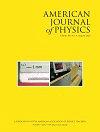简单量子系统的s矩阵
IF 0.9
4区 教育学
Q3 EDUCATION, SCIENTIFIC DISCIPLINES
引用次数: 0
摘要
散射过程是量子力学和粒子物理入门课程中的一个标准主题。不幸的是,一个完整的数学处理往往是压倒性的本科生。本文介绍了一些易于理解但仍包含量子理论基本特征的玩具模型。我们定义了一个具有状态向量的Hilbert空间,并使用产生/湮灭算子构造了转移矩阵和s矩阵。我们展示了摄动理论如何产生费曼图和费曼规则。我们还讨论了如何使用对称性和群论来限制可能的相互作用。本文章由计算机程序翻译,如有差异,请以英文原文为准。
S-matrices for simple quantum systems
Scattering processes are a standard topic covered in introductory courses on quantum mechanics and particle physics. Unfortunately, a full mathematical treatment tends to be overwhelming for undergraduate students. This article introduces some toy models that are easy to comprehend but still contain the essential features of quantum theory. We define a Hilbert space with state vectors and use creation/annihilation operators to construct transition matrices and S-matrices. We show how perturbation theory gives rise to Feynman diagrams and Feynman rules. We also discuss how we can use symmetry and group theory to restrict what interactions are possible.
求助全文
通过发布文献求助,成功后即可免费获取论文全文。
去求助
来源期刊

American Journal of Physics
物理-物理:综合
CiteScore
1.80
自引率
11.10%
发文量
146
审稿时长
3 months
期刊介绍:
The mission of the American Journal of Physics (AJP) is to publish articles on the educational and cultural aspects of physics that are useful, interesting, and accessible to a diverse audience of physics students, educators, and researchers. Our audience generally reads outside their specialties to broaden their understanding of physics and to expand and enhance their pedagogical toolkits at the undergraduate and graduate levels.
 求助内容:
求助内容: 应助结果提醒方式:
应助结果提醒方式:


